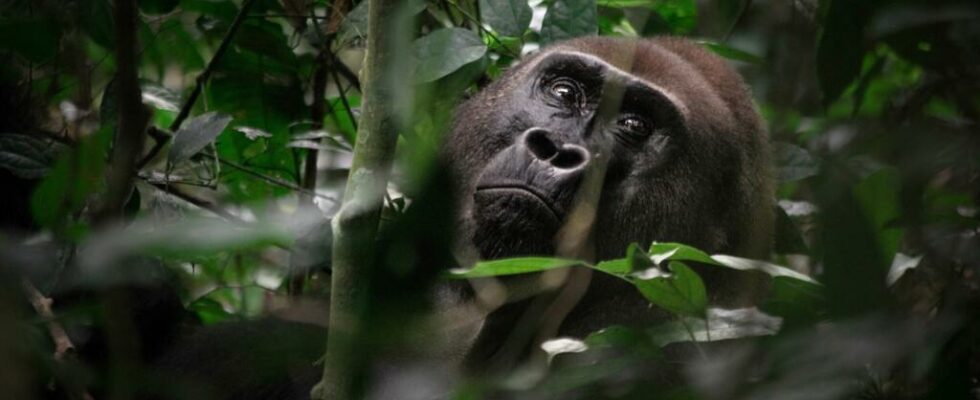According to a study published Wednesday October 23 in a journal of the Royal Society British, western gorillas move in groups not by following the dominant male of the group but only after a sort of “vote” expressed by enough individuals.
2 mins
Between two resting phases, western gorillas move in groups, in search of food, which requires coordination of their movements in the forest. But who signals the departure and chooses the direction to take? These are the questions asked by scientists from the University of Neuchâtel and the National Museum of Natural History. Their research was published on Wednesday October 23 in the scientific journal The Royal Society.
“Votes” on a common project »
Researchers spent 11 months studying three groups of gorillas in the Dzanga-Sangha forest, in Central African Republic. They then observed that, in the five minutes before departure, the vocal activity of the great apes increased considerably. “ It is plausible that grunts function as “votes” on a common project ”, according to the study.
Also readSabrina Krief (veterinarian): gorillas are “the only great ape population increasing today”
And the greater the number of individuals participating in these exchanges, the more likely they are to get moving. “ We found that gorillas were more likely to leave if a high number of group members had vocalized “, explains Lara Nellissen. “ Which suggests that gorillas could respond to a quorum : once a threshold number of individuals has decided in favor of a behavior, the entire group adopts it ”, according to her. Clearly, the moment of departure would be decided collectively and democratically.
A discovery which calls into question the theory according to which the dominant male, the silverback, alone decides everything for the rest of the group. Scientists now hope to be able to determine the content of these exchanges by studying the variation in grunts.
Also readCentral African Republic: getting gorillas used to humans thanks to the traditional knowledge of the Ba’Aka pygmies
But recording gorilla vocalizations can also help decipher other types of cooperation. According to one of the scientists behind this study, great apes also communicate to find out about the presence of good quality food. Sharing information that maintains group cohesion.
